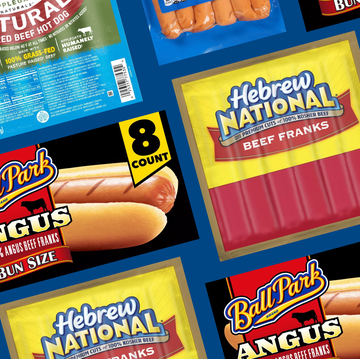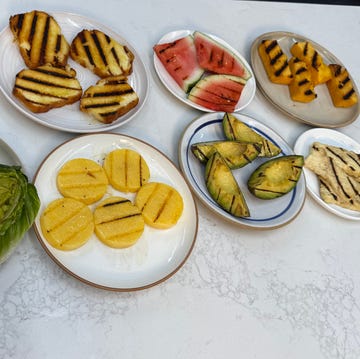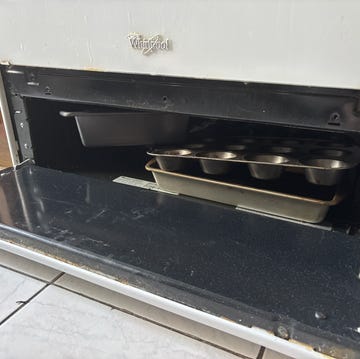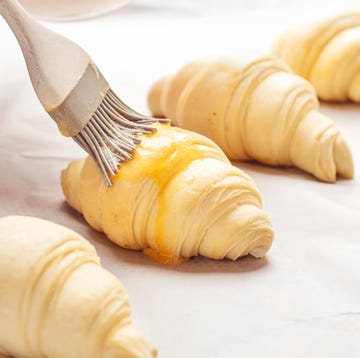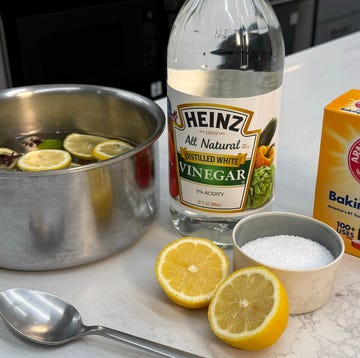Table salt (AKA iodized salt)
 Aleksandr Zubkov//Getty Images
Aleksandr Zubkov//Getty ImagesShape: cubic
This is the salt you know. It’s in every little salt shaker in every restaurant and in the kitchen cabinets of most moms and dads. You know the round container with the metal slot that pulls out? That’s your table salt. It’s also called iodized salt because it contains potassium iodide. The taste is more metallic due to anti-caking agent and potassium iodide. It's best used for general cooking needs.
If you want to try, we recommend Morton's Iodized Salt.
Kosher salt
 Michelle Arnold / EyeEm//Getty Images
Michelle Arnold / EyeEm//Getty ImagesShape: pyramids
This is the culinary industry standard. When reading a recipe from a test kitchen with salt listed as an ingredient, it is most likely Diamond Crystal Kosher Salt. This is the one-size-fits-all salt. It has a perfect middle-of-the-road texture that is easily dissolvable. The salinity can vary by brand (Morton’s Kosher Salt is 1.5 times saltier than Diamond Kosher), so always taste. It's best used for general cooking needs.
If you want to try, we recommend Diamond Crystal Kosher Salt.
Advertisement - Continue Reading Below
Sea salt
 Floortje//Getty Images
Floortje//Getty ImagesShape: irregular
This is salt made from the ocean's salinity. On a very basic level, sea water is boiled down until all that’s left is the salt. This can come in a number of different textures and salinities. It is just like wine in that the flavor can come from the environment or region it is harvested in. We will get into two specific types below (sel gris and fleur de sel). This is best used for finishing or general cooking needs depending on texture.
If you want to try, we recommend SaltWorks Premium Sea Salt.
Flaky salt
 OlgaMiltsova//Getty Images
OlgaMiltsova//Getty ImagesShape: irregular
Alright, let’s get fancy. Flaky salt can be sea salt or kosher salt. The name is determined by the texture. If the individual pieces of salt are big, not uniform in size, and have a flat-ish shape, then you have flaky salt. If you look closely enough, you can see each flake is shaped kind of like a pyramid, but like snowflakes, all the flakes are different, too. It's best used as a finishing salt.
If you want to try, we recommend Maldon Sea Salt Flakes.
Advertisement - Continue Reading Below
Sel gris
 Karisssa//Getty Images
Karisssa//Getty ImagesShape: large and small irregular chunks
Harvested from the Atlantic coast of France, the name of this type of salt translates to "gray salt." It gets its grays from specific minerals in the water that come from a clay lining. It tends to be costly because it’s gathered by hand using wooden tools. The taste leans on the brinier side with a moister texture. This is best used as a finishing salt.
If you want to try, we recommend Le Guerandais Coarse Sea Salt Gros Sel.
Fleur de sel
 PJjaruwan//Getty Images
PJjaruwan//Getty ImagesShape: stacked layers
When the name of the salt is in French, you know it’s going to be fancy. Hailing from the Brittany coast of France, fleur de sel translates to “flower of salt'' and is made only from the “young” crystals. The salt is collected in similar fashion to sel gris with wooden tools as the crystal forms naturally on the surface of the salt evaporation ponds. The collection only takes place once a year in the summer when the weather is perfect. It's best used as a finishing salt (it’s expensive, guys!).
If you want to try, we recommend Le Saunier De Camargue Fleur De Sel.
Advertisement - Continue Reading Below
Himalayan pink salt
 MirageC//Getty Images
MirageC//Getty ImagesShape: varies
This is a trendy salt. You see it just about everywhere, even in people’s homes as decor. It comes from the Himilayan Mountains of Pakistan and it gets its iconic color from natural minerals that vary from deep reds to light pinks. The uses are versatile; you can use it in salads, on meat, on vegetables, or even to rim the cocktail glass. Basically, you can use it for finishing or general cooking needs depending on texture.
If you want to try, we recommend The Spice Lab Himalayan Salt.
Smoked or flavored salt
 Jennifer A Smith//Getty Images
Jennifer A Smith//Getty ImagesShape: varies
Infusing different flavors into salt is a great way to add some variety to a dish. Smoked salt is perfect for the grill or for over fish. Avoid buying smoked salt made from liquid smoke, as it tends to be bitter. Other flavored salts can come from herbs or spices. Think rosemary salt, truffle salt, or chipotle salt. Things can get even fancier with black garlic salt or wine salt. This is best used as a finishing salt (you don’t want to lose the flavor in the cooking process).
If you want to try, we recommend San Francisco Salt Company Alderwood Smoked Sea Salt.
Advertisement - Continue Reading Below
Advertisement - Continue Reading Below
Advertisement - Continue Reading Below

